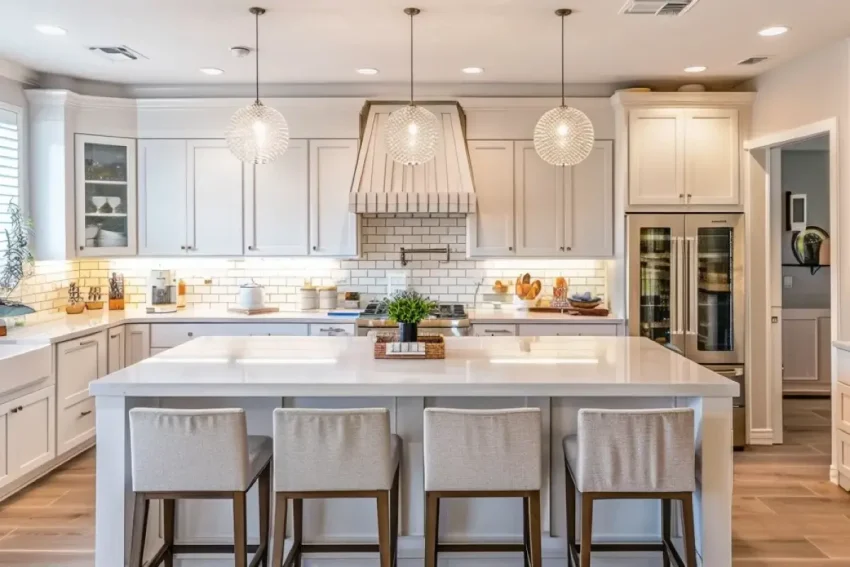From Drab to Fab: Tips for Flipping Abandoned Houses

Flipping abandoned houses offers an exciting opportunity for real estate investors and enthusiastic do-it-yourselfers alike. These properties often come at a lower cost, providing the potential for a solid return on investment after a makeover.
The key is seeing beyond the current state and envisioning what could be. With creativity, effort, and strategic planning, a dilapidated property can become a desirable home. Keep reading for insights into turning your next project from drab to fab.
Contents
Marketing Your Flipped House for a Successful Sale
Once your flip project is complete, it’s time to put it on the market. Marketing your renovated house effectively is crucial for attracting potential buyers and securing a successful sale. High-quality photographs and vivid descriptions in your listing can showcase the property’s best features and the work you’ve put in. Consider staging the home to help buyers envision themselves living there.
Digital marketing should be at the forefront of your sales strategy. Utilize online real estate platforms, social media, and your network to reach a wider audience. An open house can also generate interest, offering potential buyers the chance to see the quality of your renovations firsthand. Word-of-mouth can be powerful, so don’t hesitate to engage your community in promoting the property.
Dave Lane’s Hi-Tech Mechanical can be a valuable partner in ensuring the property’s HVAC system is in top shape for potential buyers. Ensuring that all fundamental utility systems in the house are functioning well is essential for a smooth sale. With strategic marketing and attention to detail, your flipped house can be a sought-after property on the market.
Creating a Budget and Timeline for Your House Flip
Financial planning is vital when embarking on a house flip. Create a detailed budget that includes purchase price, estimated renovation costs, holding costs, and a cushion for unforeseen expenses. Break down your budget by room or project section, itemizing expenses such as materials, labor, permits, and inspections. Remember, it’s better to overestimate costs than to be caught off guard.
Developing a timeline is equally important and should be realistically aligned with your budget. A delayed project can increase costs significantly, so set a schedule for each phase of work. This is where a reliable team comes into play, as experienced contractors can help keep your project on track. Ensure deadlines are clear and agreed upon, and create contingency plans for potential delays.
Efficient use of resources will help maintain your budget and timeline. Seek out cost-saving opportunities where available. For instance, scrap metal Burton provides a resource for both sourcing materials and disposing of renovation waste responsibly, possibly adding value to your project. Staying organized with a clear system for tracking expenses and project progress is crucial.
Designing Renovations That Attract Buyers
When redesigning an abandoned property, your goal is to appeal to a broad market while also adding unique touches that make the house stand out. Prioritize renovations that will increase the property’s value, such as updating kitchens and bathrooms, which often provide the best return on investment. Consider open layouts and multi-functional spaces that cater to modern lifestyles.
While it’s important to keep an eye on trends, avoid overly trendy designs that may not age well. Opt for a balance between contemporary aesthetics and timeless features. Neutral color palettes offer a blank canvas for buyers to personalize, while quality fixtures and finishes signify a well-executed renovation. Energy-efficient upgrades can also be a selling point, appealing to environmentally conscious buyers and those looking to save on utility costs.
Renovating abandoned properties often means navigating a maze of permits and regulations. It’s crucial to understand local zoning laws, building codes, and necessary permits before starting any work. Failing to comply can lead to costly fines and delays, jeopardizing your entire project. Start by consulting with your local building authority to gather all necessary information.
Depending on the scope of your renovation, you may need different types of permits for structural changes, electrical work, plumbing, or exterior alterations. It’s wise to hire professionals familiar with the permit process in your area. In some cases, you might also need to consider historical preservation rules if the property is in a designated area or of a certain age.
Overall, flipping abandoned houses requires a blend of vision, budgeting, legal savvy, design sensibility, and marketing acumen. With thorough planning and an understanding of the market, you can turn neglected properties into desirable homes and reap the rewards of your hard work and investment.



